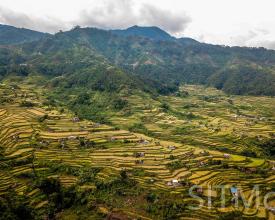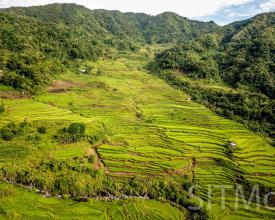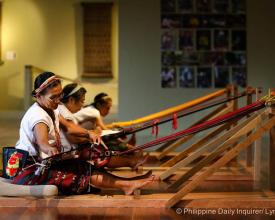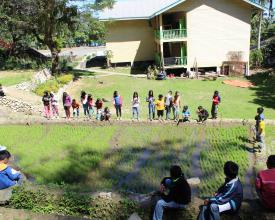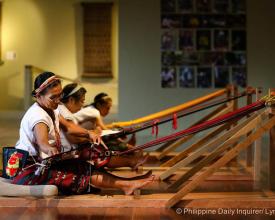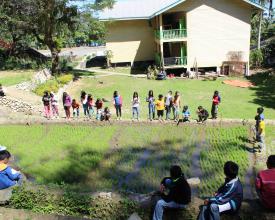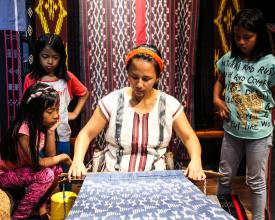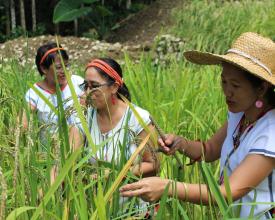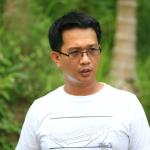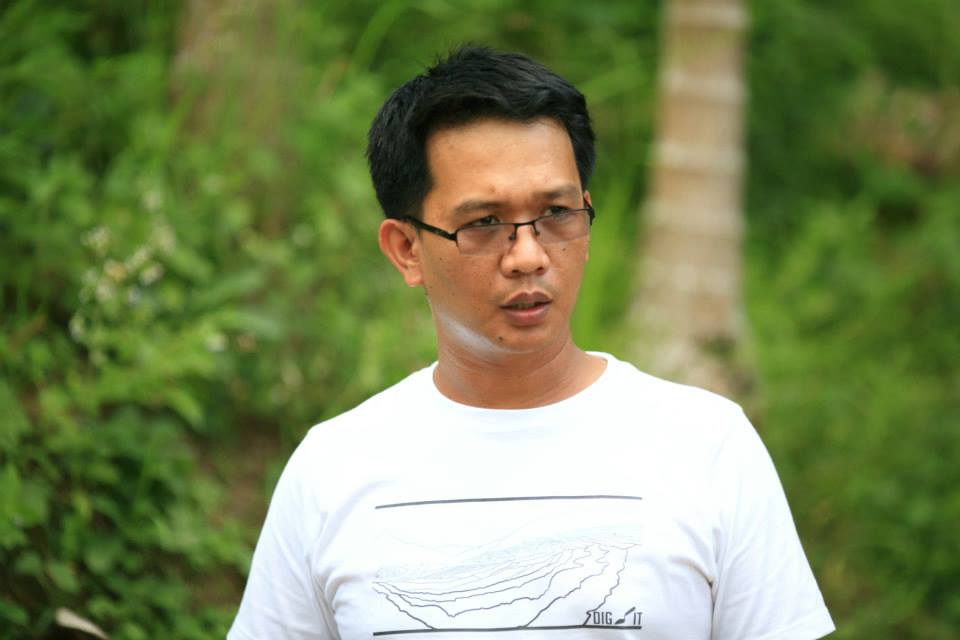
Impliquer les jeunes dans la conservation des rizières en terrasses des cordillères philippines par le biais de l'éducation au patrimoine, Philippines
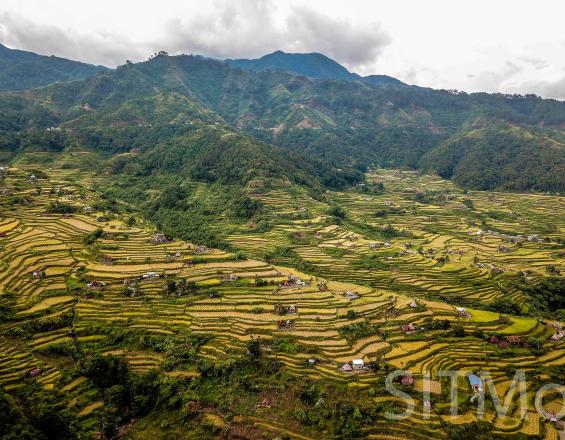
Les rizières en terrasses des cordillères des Philippines, situées dans les zones montagneuses du nord de Luzon, ont été inscrites sur la Liste du patrimoine mondial (PM) sur la base des critères (iii), (iv) et (v) en 1995, en tant que paysage culturel vivant à évolution organique d'une valeur universelle exceptionnelle. Produites par le groupe ethnique Ifugao, les terrasses sont des témoignages tangibles de la transmission intergénérationnelle de leur vision du monde indigène qui représente l'harmonie entre l'homme et l'environnement. En 2001, le bien a été inscrit sur la liste du patrimoine mondial en péril en raison de la détérioration causée par des conditions climatiques extrêmes et des changements socioculturels, notamment l'émigration, la perte du savoir autochtone et l'érosion des institutions sociales coutumières. Le mouvement Save the Ifugao Terraces (SITMo), une organisation locale à but non lucratif, travaille en partenariat avec les autorités locales et nationales et les institutions scientifiques pour sensibiliser les jeunes aux valeurs culturelles et naturelles interdépendantes des rizières en terrasses par le biais de l'éducation au patrimoine, permettant ainsi leur conservation.
Contexte
Défis à relever
Le principal défi est le mauvais état de conservation des rizières en terrasses d'Ifugao, lié à des politiques publiques culturellement insensibles et à une planification inadéquate, qui ne prennent pas en compte les dimensions naturelles et humaines pour les conserver. La détérioration des terrasses est due à plusieurs facteurs, notamment environnementaux (conditions climatiques extrêmes), sociaux (émigration, perte des connaissances traditionnelles, érosion des institutions sociales coutumières) et économiques (agriculture de subsistance, absence de revenus alternatifs). La conviction de SITMo est que la conservation des rizières en terrasses d'Ifugao dépend largement de la continuité du système de connaissances indigènes d'Ifugao, qui a maîtrisé l'environnement naturel en créant un paysage unique et un mode de vie distinct. C'est pourquoi le travail se concentre sur l'éducation des jeunes, afin de transmettre les connaissances traditionnelles, basées sur des valeurs naturelles et culturelles interdépendantes, et qui permettraient le développement durable des populations indigènes d'Ifugao.
Emplacement
Traiter
Résumé du processus
Afin de développer une stratégie durable pour la conservation des rizières en terrasses d'Ifugao, il était nécessaire de reconnaître la valeur de la culture indigène d'Ifugao. Les rizières en terrasses, en tant que patrimoine, sont le produit de centaines d'années de connaissances traditionnelles et de transmission intergénérationnelle d'une vision du monde particulière. Le développement de partenariats entre des groupes d'activistes locaux comme SITMo et le gouvernement (BB1), et des institutions scientifiques qui peuvent poursuivre la recherche et soutenir le savoir traditionnel local en tant que ressource pour la conservation de la biodiversité (BB2), est essentiel pour développer un programme qui intègre la culture Ifugao dans le système éducatif (BB4). L'établissement d'un centre communautaire multifonctionnel comme le Centre d'éducation des peuples indigènes (BB3) crée l'espace et la plateforme pour une collaboration durable entre les partenaires, les communautés locales et la défense continue de la conservation des terrasses et de la culture Ifugao.
Blocs de construction
Développement d'un réseau multipartite (agriculteurs, membres de la communauté, agences gouvernementales et universités)
L'implication de toutes les parties prenantes dans la conservation du paysage culturel des Rizières en terrasses a nécessité le renforcement des réseaux existants, où les connaissances traditionnelles sur la construction et l'entretien des terrasses, transmises par le peuple Ifugao, ont joué un rôle essentiel dans leur rétablissement et leur conservation durable. En tant qu'organisation communautaire dont 99 % des membres sont des Ifugaos et qui s'appuie sur le Mouvement de reconstruction rurale des Philippines (PRRM), une ONG nationale travaillant sur des projets de développement communautaire, le SITMo disposait de bases solides pour nouer des alliances. Il a développé des partenariats avec les autorités nationales et les gouvernements locaux afin d'impliquer les communautés locales dans le processus de récupération des terrasses et de développer des stratégies durables pour leur conservation à long terme. Le SITMo s'est concentré sur l'organisation des agriculteurs dans les différents groupes du patrimoine mondial afin de discuter des problèmes auxquels sont confrontées les terrasses dans des groupes de discussion avec les communautés. Tout au long du projet, des recherches archéologiques et ethnographiques ont été menées en permanence par le SITMo en coopération avec des institutions universitaires, à savoir l'UCLA, l'Université des Philippines et l'Université d'État d'Ifugao.
Facteurs favorables
- Le SITMo a été fondé en 1999 en tant qu'initiative locale visant à protéger les terrasses et à récupérer les connaissances et le patrimoine traditionnels du peuple indigène Ifugao.
- L'inscription des Rizières en terrasses de la Cordillère des Philippines sur la Liste du patrimoine mondial en péril, à la demande du gouvernement philippin en 2001, a permis de mobiliser la coopération internationale pour soutenir les efforts de conservation des terrasses.
- Nécessité reconnue d'impliquer les communautés locales dans la conservation des terrasses.
Leçon apprise
- Importance de l'établissement d'objectifs à long terme basés sur une stratégie à long terme qui a été décidée comme étant axée sur l'éducation.
- Nécessité d'un partenariat avec le ministère de l'éducation et d'autres acteurs politiques.
Création de projets de recherche collaborative sur les savoirs autochtones et locaux
SITMo a développé un partenariat avec des institutions scientifiques locales telles que l'Université d'État d'Ifugao, qui travaille sur la désignation du Système de patrimoine agricole d'importance mondiale (GIAHS) de la FAO et a créé le Centre de recherche et de développement des rizières en terrasses d'Ifugao (GIAHS). En outre, dans le cadre de cette initiative, le SITMo travaille en coopération avec l'université d'État d'Ifugao, le ministère taïwanais de la science et de la technologie et l'université nationale Chengchi de Taïwan dans le cadre du projet "Center for Taiwan-Philippines Indigenous Knowledge, Local Knowledge and Sustainable Development", où les institutions partenaires explorent ensemble la sauvegarde et la transmission durables de leurs connaissances indigènes par l'échange et la recherche collaborative, ce qui permettrait aux communautés locales de se développer de manière durable. Un partenariat à long terme avec le département d'anthropologie de l'université de Californie à Los Angeles (UCLA) a été établi en 2012 pour entreprendre des recherches archéologiques sur les terrasses, ce qui a conduit à la création de galeries du patrimoine communautaire et à la publication d'articles scientifiques.
Facteurs favorables
- Désignation des rizières en terrasses par le GIAHS (2004)
- L'université locale de l'État d'Ifugao est engagée dans une recherche et une coopération axées sur les rizières en terrasses, l'agroforesterie et la conservation de la biodiversité.
- Le ministère de l'éducation s'est lancé dans une révision majeure du programme d'études, dans le cadre de laquelle les connaissances autochtones et la culture locale des Ifugao doivent être intégrées à tous les niveaux de la maternelle à la 12e année. Des recherches sur les connaissances traditionnelles ont été nécessaires.
- Défis communs avec les pays voisins et les autres communautés autochtones
Leçon apprise
- L'implication de la recherche dans la conservation des rizières en terrasses et l'engagement des jeunes et de la communauté dans son ensemble sont mutuellement bénéfiques (pour les instituts de recherche et les communautés locales).
- L'interface entre l'apprentissage des connaissances traditionnelles par les anciens de la communauté et les écoles formelles par des enseignants formés officiellement peut parfois être conflictuelle, c'est pourquoi des stratégies à long terme doivent être mises en place.
- La bureaucratie administrative peut être difficile pour les organisations non gouvernementales à travailler avec les agences gouvernementales et les universités, mais la patience est la clé du succès.
Ressources
Revalorisation de la culture indigène par son intégration dans le système éducatif
Les rizières en terrasses d'Ifugao sont entretenues par les familles, non seulement comme zones de production d'une culture de base, mais aussi pour la raison sentimentale que ces propriétés ont été transmises par leurs ancêtres. L'entretien des rizières en terrasses reflète principalement une approche coopérative de l'ensemble de la communauté qui repose sur une connaissance détaillée de la riche biodiversité existant dans l'agro-écosystème d'Ifugao, un système annuel finement réglé respectant le cycle lunaire, le zonage et la planification, la conservation extensive des sols et de l'eau, la maîtrise du régime complexe de lutte contre les parasites basé sur le traitement d'une variété d'herbes, le tout accompagné de rituels religieux. Pourtant, ces connaissances sont menacées par les changements socioculturels et le manque d'implication des jeunes, attirés par le mode de vie urbain et mondialisé. Afin de conserver les terrasses, la culture Ifugao doit être reconnue et le savoir indigène Ifugao transmis à la génération suivante. La stratégie durable proposée par SITMo consiste à intégrer la culture et le patrimoine dans le programme scolaire officiel afin de sauvegarder la culture Ifugao.
Facteurs favorables
En 2013, les Philippines ont adopté des lois pour la mise en œuvre de l'éducation des peuples autochtones (IPED). Bien avant cela, SITMo a été à l'avant-garde du plaidoyer pour l'intégration des connaissances traditionnelles dans le programme scolaire formel afin de lutter contre la détérioration des rizières en terrasses et de tout ce qu'elles représentaient. Le plaidoyer se poursuit avec l'institutionnalisation de l'IPED, qui intègre les connaissances traditionnelles, la langue maternelle et l'histoire locale aux différents niveaux du système éducatif.
Leçon apprise
Les consultations communautaires sont des outils indispensables à ce processus. Les anciens de la communauté, les porteurs de culture et même les dirigeants politiques sont impliqués depuis les premières consultations jusqu'à la validation du matériel pédagogique produit en vue de son utilisation dans les écoles. Le gouvernement philippin prévoit un processus de consentement libre et préalable en connaissance de cause (FPIC) qui doit être respecté.
Le système éducatif philippin est une relique persistante de la stratégie coloniale de conquête des peuples autochtones. Les Américains ont mis en place un système éducatif qui a duré plus de cent ans, suffisamment longtemps pour effacer l'adhésion d'une personne à son identité ethnique et embrasser un sens homogène du nationalisme. L'éducation a été normalisée, les valeurs ont été nationalisées. Les manuels scolaires prêchaient que le fait d'être agriculteur était la conséquence de ne pas être allé à l'école et que les croyances non chrétiennes étaient celles des sauvages. Les cultures indigènes ont été diabolisées au point que les jeunes abhorrent l'idée d'être identifiés à l'une d'entre elles. Une refonte du système éducatif peut changer la donne. La décolonisation de l'éducation est la voie à suivre.
Création d'un centre de connaissances communautaire multifonctionnel
Le SITMo a créé le Centre d'éducation des peuples indigènes (IPED) afin d'intégrer les connaissances indigènes dans le système éducatif formel et de servir de centre de ressources pour la conservation du patrimoine d'Ifugao. Le centre est en cours de création, car le SITMo travaille actuellement avec le ministère de l'éducation à l'élaboration de matériel pédagogique incluant les connaissances traditionnelles, l'histoire locale et la langue. Le centre est composé de l'organisation populaire de SITMo, qui comprend des agriculteurs, des tisserands traditionnels, des bénévoles de la communauté, des porteurs de culture et des travailleurs du patrimoine. L'IPED fonctionne désormais comme un centre du patrimoine communautaire, un centre de ressources et un musée communautaire, et incite d'autres provinces à créer le leur.
Facteurs favorables
- Partenariats avec les autorités locales, d'autres agences gouvernementales et les parties prenantes de la communauté.
- Les membres du SITMo font également partie des communautés et sont impliqués dans divers rôles communautaires.
Leçon apprise
Au départ, le centre était une simple salle d'exposition des objets collectés lors des fouilles archéologiques. L'objectif initial était simplement de montrer aux membres de la communauté les résultats du projet archéologique. La nécessité d'élargir les implications éducatives du projet nous a obligés à inclure de la documentation et d'autres objets, ce qui a donné lieu à une mini-bibliothèque sur la culture Ifugao, une galerie sur les textiles et une galerie de photos des groupes du site du patrimoine mondial et des sites du GIAHS. Le centre est également devenu un lieu de formation pour les communautés et les enseignants sur l'éducation au patrimoine, ainsi qu'un lieu de visite éducative pour les étudiants d'Ifugao. Le centre est devenu multifonctionnel en tant que centre du patrimoine communautaire, centre de ressources et musée communautaire, accueillant une diversité d'activités et répondant à différents besoins des communautés locales. Il est important d'être flexible et de s'adapter aux besoins de la communauté.
Formation des enseignants du secondaire sur les connaissances traditionnelles et la culture locale
Afin d'intégrer la culture Ifugao dans le programme scolaire formel, les enseignants doivent bénéficier d'un renforcement des capacités sur la culture Ifugao. Les enseignants, pour la plupart d'origine ifugao, ont oublié le système de valeurs de leurs ancêtres en raison du système éducatif moderne. Certains ont été formés en dehors de la région d'Ifugao. L'objectif est de former les enseignants à l'intégration de la culture dans les mathématiques, les sciences sociales et tous les cours, et de concevoir des matériels d'apprentissage et des modules qui incluent la culture Ifugao comme thème transversal. Les formations des enseignants sur l'élaboration des programmes locaux et la création de modules d'apprentissage sont en cours.
Facteurs favorables
Le gouvernement national avait entrepris de modifier le système éducatif pour autoriser les programmes d'études locaux (IPED).
Leçon apprise
La culture d'Ifugao ne doit pas être enseignée en tant que thème distinct, mais peut être un thème transversal pour l'ensemble du programme d'études.
Impacts
Les efforts coordonnés des gouvernements nationaux, provinciaux et municipaux, des fonds internationaux et la participation des communautés locales ont permis de retirer les rizières en terrasses de la liste du patrimoine mondial en péril en 2012. Cependant, les terrasses sont toujours dans une situation vulnérable. SITMo encourage l'investissement dans l'éducation pour sensibiliser aux valeurs du patrimoine afin de parvenir à la durabilité. Jusqu'à présent, les impacts sociaux et économiques concrets sont les suivants :
- Changement du système éducatif : La culture est obligatoire pour le département de l'éducation. Les connaissances traditionnelles sont incluses dans la conservation du patrimoine mondial, et la culture, l'histoire et la langue ifugao sont intégrées dans le programme d'études officiel.
- Sensibilisation accrue : la valeur patrimoniale des terrasses devient un sujet de discussion de la vie quotidienne des habitants d'Ifugao.
- Acquisition de fonds supplémentaires pour les activités de défense, de sensibilisation et de conservation.
Bénéficiaires
Communautés locales d'Ifugao, jeunes d'Ifugao et communauté d'Ifugao dans son ensemble
Objectifs de développement durable
Histoire
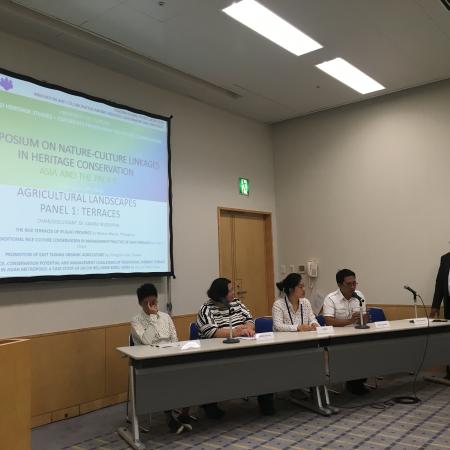
L'objectif global du SITMo est de contribuer à l'amélioration de la situation économique des cultivateurs de rizières en terrasses afin d'assurer la continuité et la conservation du paysage en terrasses. Le SITMo a toujours pensé que la conservation des terrasses est principalement ancrée dans les relations économiques entre les personnes et le paysage culturel. Bien que les terrasses aient été construites à une époque d'isolement relatif des Ifugaos, leur fonction économique est restée constante à travers les générations et tous les bouleversements socio-politiques que l'histoire a connus. Le riz est devenu le centre du développement culturel des Ifugao. Aujourd'hui, les terrasses sont laissées à une population vieillissante d'agriculteurs dont les connaissances traditionnelles n'ont personne à qui les transmettre. Un agriculteur âgé a déclaré : "Les terrasses restantes que vous voyez ne sont que des ombres de ce que nous avions dans notre enfance. À notre époque, les gens se réunissaient pour travailler les champs. Chacun devait participer à la construction des murs en pierre, à la plantation et à la récolte. Nos vieux prêtres priaient les rituels et offraient des sacrifices aux dieux, ces mêmes dieux que nos ancêtres priaient. La communauté se réunissait pour travailler, pour célébrer, pour s'entraider. Les saisons peuvent faire s'écrouler un mur de terrasse, trop de pluie, trop de soleil, nous avons connu cela à notre époque - mais nous continuons à les reconstruire, pierre par pierre, rizière après rizière. Nous devions maintenir les terrasses en vie, nous devions inonder les champs d'étangs pour la prochaine saison de plantation. C'est ce que nous avons fait, comme nous l'ont enseigné les anciens".
Lors de nos réunions de jeunes, un adolescent a résumé toutes leurs préoccupations : "En tant que jeunes Ifugaos, nous avons la responsabilité de prendre soin de notre patrimoine. Nos rizières en terrasses, nos forêts, les valeurs et le savoir indigène qui accompagnent toutes ces choses. Mais nous sommes aussi des enfants des temps modernes. Alors que nos aînés nous disent de prendre soin de la terre, celle-ci ne suffit plus à assurer notre subsistance. Notre population augmente, mais la terre ne s'agrandit pas. Nous voulons conserver notre culture en tant qu'Ifugaos, mais nous devons aussi nous adapter aux réalités des temps modernes".
En comparant et en évaluant les origines des jeunes et des anciens, nous avons réalisé qu'il n'est pas nécessaire de choisir entre rester sur place et aller de l'avant. La culture doit changer pour survivre, mais cela ne signifie pas qu'il faille abandonner totalement la tradition. Des compromis sont nécessaires pour que le changement de culture et la conservation fonctionnent. La culture de l'Ifugao est ce que nous avons aujourd'hui. Elle peut évoluer soit vers l'oubli total du passé, soit vers l'adaptation du passé au présent. (Marlon Martin, SITMo)

